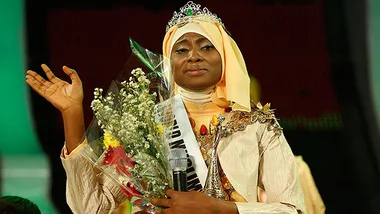With an emotionally-charged debate simmering over a proposed burqa ban in Australia this month, The Weekly decided to seek out the views of a group of people who didn’t seem to have much of a voice in the matter – women who actually wear the face veil.
It proved to be a more challenging task than expected. Despite putting out calls to various Muslim organisations, Facebook groups, academics, a politician’s office, lawyers and more, we struggled to find women who would speak out and take part in a photo shoot.
Perhaps that’s not too surprising, given the frenzy that had arisen around the face veil (correctly known as the niqab), fuelled by politicians and some sections of the media.
Exacerbating matters was the rise in anti-Muslim sentiment following anti-terror raids, with women wearing headscarves in particular singled out for abuse. Who could blame anyone for being reluctant to go public amid all that?
Fortunately Anisa Khan, a charismatic mother, teacher and skincare entrepreneur from Sydney, came forward with three other women to make their voices heard.
We decided to hold the photo shoot at a contemporary house overlooking the sea in Sydney’s eastern suburbs, providing an eye-catching juxtaposition of modern women wearing a veil steeped in history in the context of 20th Century Australia.
The four women who arrived at our shoot – all wearing clothing that covered their bodies plus headscarves and niqabs over their faces – and were friendly, open, articulate and insightful. To the casual passer-by, nevertheless, their arrival outside may have seemed an arresting sight near a beach where most people wear not much more than small triangles of material.
Once inside – where we had an all-female crew including editor-in-chief Helen McCabe, creative director Jane Cramer, photographer Liz Ham, journalist Clair Weaver and assistants – one of the women, Sadia, removed her face veil.
This was because her husband was the only man in the room – for women who wear the niqab, it’s only your husband and close male relatives who are permitted to see your face. The couple planned to go out for lunch together, making the most of his day off work and some quiet time without their five children, afterwards.
The other three women kept their niqabs on until Sadia’s husband was out of the room – and when he turned towards where we were sat, they immediately put their veils back on again.
There were no limitations placed on what the women could or couldn’t say. Despite the image of the niqab as a tool of oppression, all four insisted they had chosen it – and interestingly didn’t see it as a barrier to their self-identity as feminists who support in equal rights.



